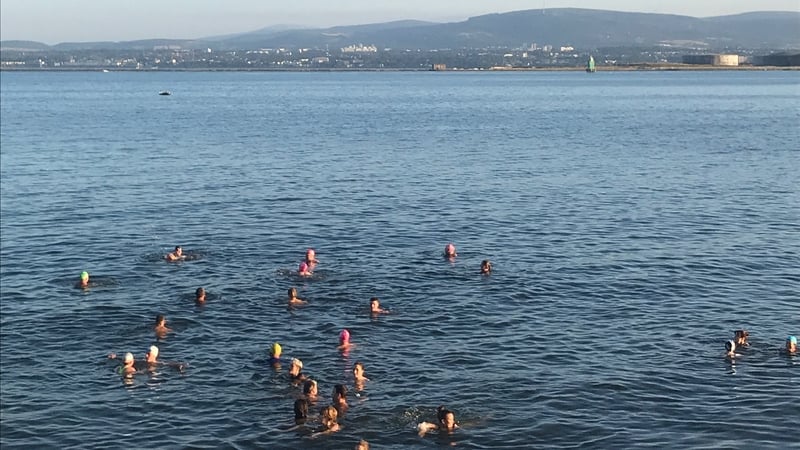Analysis: The bathing water quality at your local swimming spot is an important factor in ensuring a safe experience on these hot days
A 2024 report by Sports Ireland identifies swimming as the most popular sports activity in Ireland after personal exercise. As we approach peak summer season and hope for warm weather, thousands of Irish people will be visiting local beaches and inland swimming places for a refreshing dip. While water safety is of paramount importance, the bathing water quality at your local swimming spot is also an important factor for a safe swimming experience.
Last year, a report from the European Commission indicated that the share of Irish beaches with “excellent” water quality (77%) remains below the EU average (85%). The report highlights how poor water quality undermines the trust of citizens, while it also has a measurable economic impact on tourism revenue and lost working days due to sickness.
Europeans spend more than €800 billion a year on recreational visits to water bodies, but perceived poor water quality costs €100 billion a year in lost visits, according to a 2021 study. The European Commission has estimated that the direct benefits related to the protection of human health since the introduction of the EU’s 2006 Bathing Water Directive to monitor bathing water quality equates to €1.65 billion per year.
So what is being done to ensure that we can enjoy our outdoor summer swims in clean waters? The bathing water directive means every EU country must monitor bathing water quality at designated bathing water locations—around 22,000 bathing sites in all—during the bathing season, which in Ireland takes place officially between the June 1st and September 15th every year.
Each country needs to take at least four water samples per year from each site over the course of four years to be awarded classification as poor, sufficient (the minimum acceptable standard), good or excellent. If a bathing water is classified as poor, it is closed for a full bathing season and a management plan has to be put into place to achieve at least a sufficient standard. This has been the case with Sandymount Strand in Dublin, which is now closed for bathing for the full bathing season after testing poor between 2021 and 2024.
The EU Bathing Water Directive also includes specific guidelines for dealing with short-term bathing water pollution issues. These guidelines are put into place for events such as the recent temporary swimming ban at Dollymount Strand last month due to sewage discharge from stormwater overflow caused by heavy rainfall. Some local authorities in Ireland are already monitoring water quality off-season and doing more regular testing during the bathing season. This is particularly important as water activities have increased in frequency and take place both inside and outside the bathing season.
The recent cancellation of the annual Blackrock Raft Race in Dundalk due to suspected water pollution illustrates the importance of faster, more frequent and more widespread testing methods and clear communication to bathers on such issues. In this particular case, no water testing took place for the event as Blackrock Beach is not a designated bathing water site.
Louth County Council advised the general public to use “officially designated bathing water sites in the area” instead. While neither the EPA nor the Louth County Council are actually responsible for testing the water quality at Blackrock Beach, the local community members are the ones directly affected, as any future action on potential sources of water pollution in their local area depends on the availability and frequency of water testing in the area.
Many bathers will not be aware of the current resources available for checking bathing water quality, such as the website beaches.ie ran by the Environmental Protection Agency, which also has a FAQ section with important information. This includes a recommendation that no one should swim in rivers, lakes and seas for 48 hours after any heavy rain and advice on how citizens can make a submission to their local authorities to designate a new bathing area. It also outlines the many ways in which water pollution can be triggered other than by stormwater overflow, including bird and dog fouling, industrial and agricultural discharges and domestic sewage misconnections.
While water testing at designated bathing sites and the online access to information via beaches.ie is reassuring, there is still a lag between assessing water quality and providing information to citizens. Water samples need to be collected and assessed in the lab, a process that can take up to 48 hours prior to the issuing of results. The European Commission acknowledges that new technologies such as automated monitoring, sensor technologies, satellite imaging and predictive modelling can provide more efficient monitoring of bathing water quality.
The DCU RESTART project aims to achieve this through better communication strategies and technical improvements in water quality analysis to cater to the increase in bathing water activities both during and outside the bathing season. The project is developing rapid testing technologies to provide much faster results while also raising awareness of the importance of checking bathing water quality before swimming in Irish waters and analysing how communication of bathing water quality from government agencies to Irish citizens can be improved.
An online survey is providing a snapshot of the current status of awareness of this important topic while investigating how we can improve the dissemination of bathing water quality information. An early sampling of the results with more than 140 participants indicates that:
- 25% don’t know if the areas where they conduct water activities are identified bathing sites (subject to bathing water quality analysis)
- More than 66% of respondents take part in water activities both within and outside the bathing season.
- Less than 50% of respondents are aware of beaches.ie as one of the main resources for bathing water quality in Ireland
- 75% of respondents are unaware that they can identify new bathing water areas and propose them to local authorities (so that they are subject to regular bathing water quality monitoring)
- 20% of participants have experienced a health issue at least once after conducting water activities
By improving communication, awareness and efficiency of bathing water quality monitoring in Ireland, The RESTART project highlights the key importance of water in everyday life, for health, leisure and economical purposes. If you’re going to go for a cool dip on these hots summer days, remember to check the water quality of the site you are visiting. And don’t forget the sunsceen!













